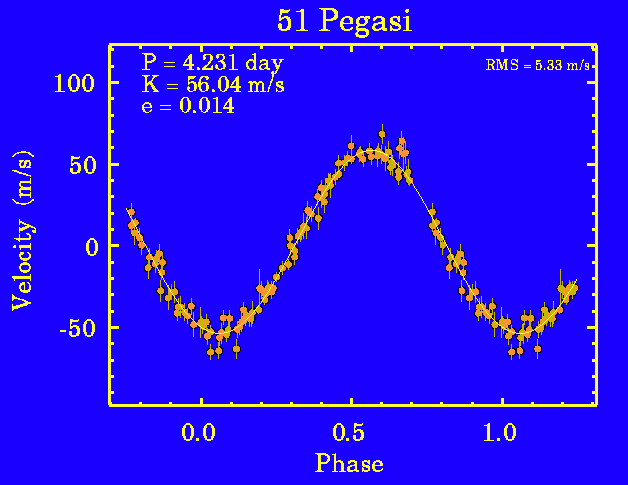The search for exoplanets, whether you believe in them or not, uses measurements of Doppler shift (spectral lines moving) to precisely measure the radial velocity of stars. For example, I found this data for 51 Pegasi:

The line connecting them is a sinusoid model for it. I can integrate that model to get a function for how far away the star is at any given time:

If I plug the function stats in the graph into the antiderivative, I get a range of 6.5 million meters, equivalent to about sixty degrees of latitude along a meridian. This would obviously mean
huge movement in the sky that isn't observed.
What if stars just normally got hotter and colder periodically? Wouldn't that shift their spectra and create the appearance of radial motion?
Sure, but it wouldn't change the spectral lines—specific wavelengths that are observed in smaller portions because they're absorbed by the atmosphere of the star.
Why can't the spectral lines also change?
Because they're determined by chemical properties, and as such only change when there's a chemical change. This also means that they can never continuously move; they can appear or disappear, but not shift.